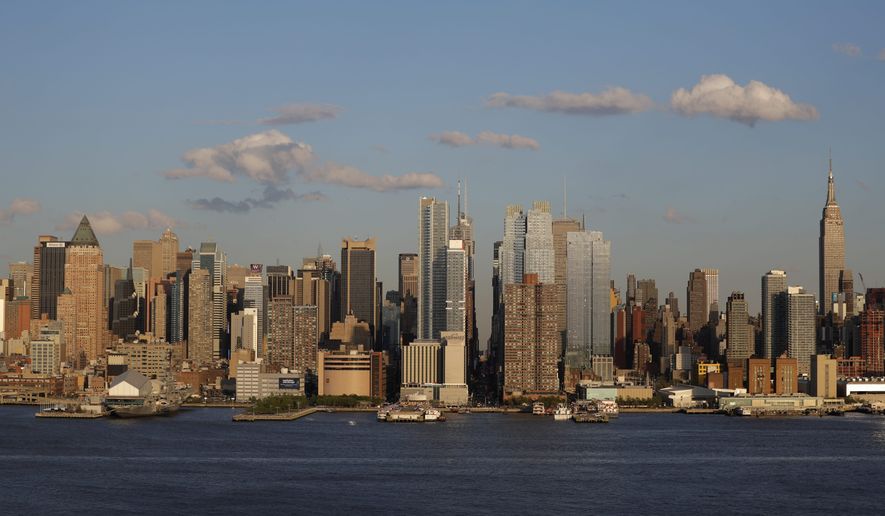State secessionist movements are long shots at best, but New Yorkers pushing for a breakup between the Big Apple and upstate are counting on the very real possibility of a constitutional convention to boost their odds.
Voters will decide in November whether to hold a statewide constitutional convention in 2019, thanks to the New York State Constitution, which allows for such an event every 20 years.
It’s a rare opportunity that the Divide NYS Caucus hopes to seize.
“It’s time to cease fantasizing that NYS legislators have the best interests of the people in mind,” the caucus said in a statement. “If we vote YES on the NYS convention, the first step in our plan to form autonomous regions is complete.”
The caucus wants to lift upstate New York’s struggling economy by reorganizing the state into two or even three independent regions. Such a division could be accomplished at the convention without the approval of the governor or the state Legislature.
“It’s the only thing they can’t control,” said Divide NYS Caucus chairman John Bergener.
The secession-minded aren’t alone in making plans for a convention. Others backing the so-called “con con” include advocates of gun rights, health care, clean water and abortion, all of whom would like to wedge protection for their stances into the state constitution.
Additional items that could land on the convention menu include term limits, budget and pension reform, campaign finance rules, judicial reorganization, appointing versus electing judges and redistricting.
A Siena College poll released May 24 found 62 percent of those polled favor the convention, while 22 percent oppose it, although two-thirds have heard “nothing at all” about it.
Even so, convention supporter Gerald Benjamin, a political science professor at State University of New York at New Paltz, described “con con” advocates as “underdogs.”
“The issue right now is whether the advocates can finance a serious campaign,” Mr. Benjamin said. “They’re getting their resources together. Right now I think we’re the underdogs on this. I think we have a chance, but we’re underdogs.”
That’s because the opposition is formidable. Organized labor and the New York State Alliance for Retired Americans already have launched campaigns urging voters to nix the convention, warning that delegates would have the power to gut public pension benefits and collective bargaining rights.
“Delegates to a possible convention can essentially blow up the way of life New Yorkers enjoy and the expectations and priorities each of us have,” said Paul Pecorale, vice president of New York State United Teachers. “Whether it’s public education, collective bargaining, our retirement security, environmental protections, spending caps in the budget or any other issue one cares about, it’s all at risk.”
Gov. Andrew Cuomo has said he supports a constitutional convention while also expressing reservations about how it might look in practice.
“I think the governor has calculated the political consequences of his ability to influence the Legislature, his ability to stay in a positive relationship with the organized labor movement and also his presidential ambitions, and he’s decided to back away,” said Mr. Benjamin. “He hasn’t denounced the idea, but he hasn’t given it the emphasis that, in the past, he has done.”
If voters approve the convention in November, a year later they would select three delegates from each of the state’s 63 senatorial districts and 15 at-large delegates. Any amendments passed at the convention would go before the voters for final approval in November 2019.
Even though the constitution allows for a regular convention, New York has not held one since 1967, when the state Legislature called it. The last one called by voters was in 1938.
For upstate advocates of a split state, the convention may come as their best chance to pull off a Brexit-style departure from New York City.
The Divide NYS Caucus several years ago hit on the idea of forming autonomous regions within the state that would be led by their own governors and legislators instead of seeking approval from the Legislature and Congress to form a new state.
“It could be a model for other states, too, to go to the regional-districts method,” said Mr. Bergener, the Divide NYS Caucus chairman. “This way you only need an amendment to your state constitution.”
The goal is to improve the economic prospects of upstaters, who complain that the state’s high taxes and onerous regulations have scared away jobs as companies flee to states with more business-friendly climates.
In December 2014, Mr. Cuomo declared a statewide ban on hydraulic fracturing, effectively halting any natural gas development stemming from the rich Marcellus Shale in the state’s southern tier and fueling secession talk, including calls for the region to split off and join Pennsylvania.
“What it amounts to now is more taxes are gained in New York City and that money is sent upstate, but they put so many strings attached to it that it hasn’t been helping,” said Mr. Bergener. “So it’s a ’Catch-22.’ If we were run more like Pennsylvania or Vermont, we’d be a lot better off.”
The outcome may boil down to which side has the enthusiasm edge given that the referendum is being held in an off-election year without much else to rev up voters. The other measure qualified for the November ballot would allow judges to forfeit the state pensions of public officials convicted of felonies.
“The hardest part will be getting people to show up to vote,” said Mr. Bergener.
• Valerie Richardson can be reached at vrichardson@washingtontimes.com.




Please read our comment policy before commenting.